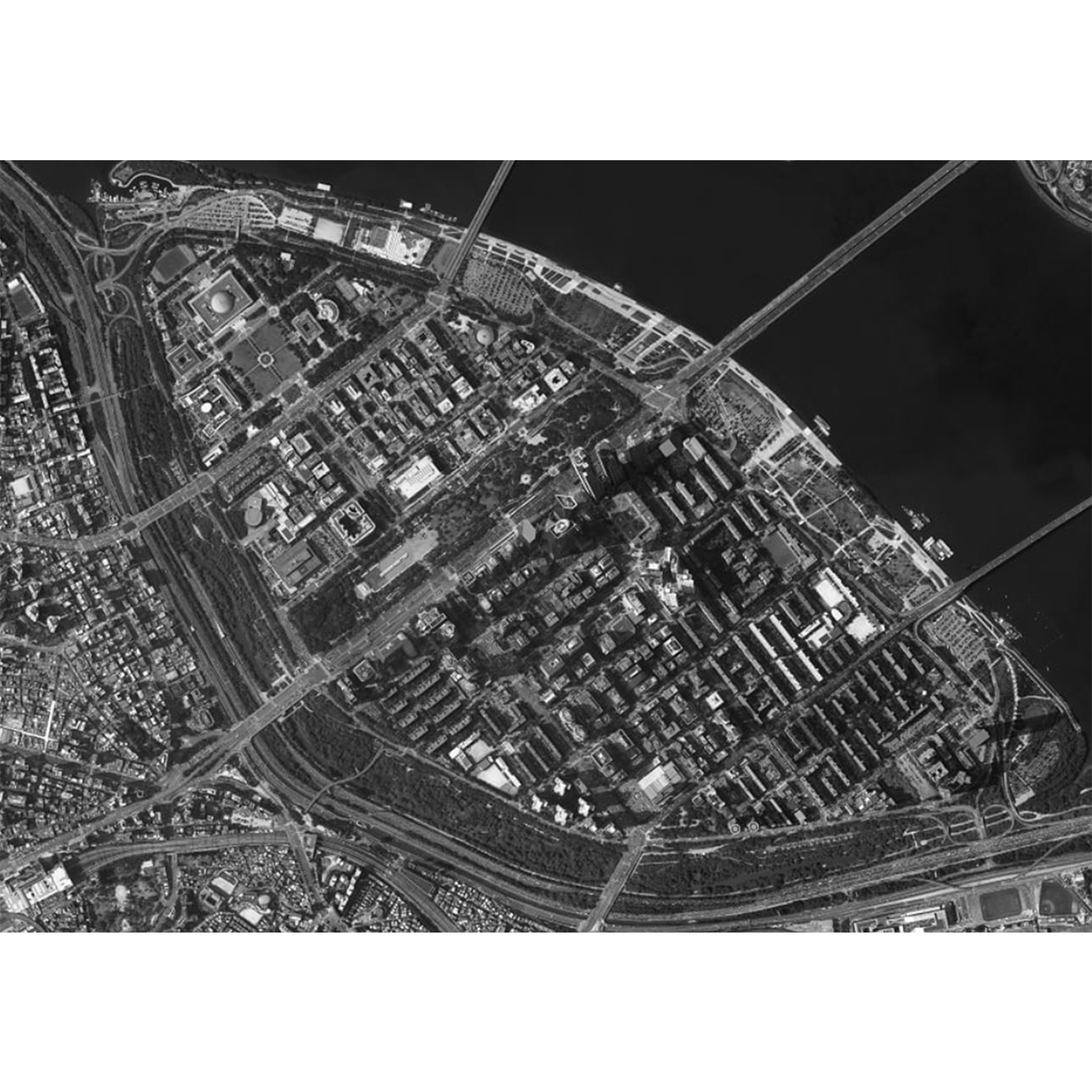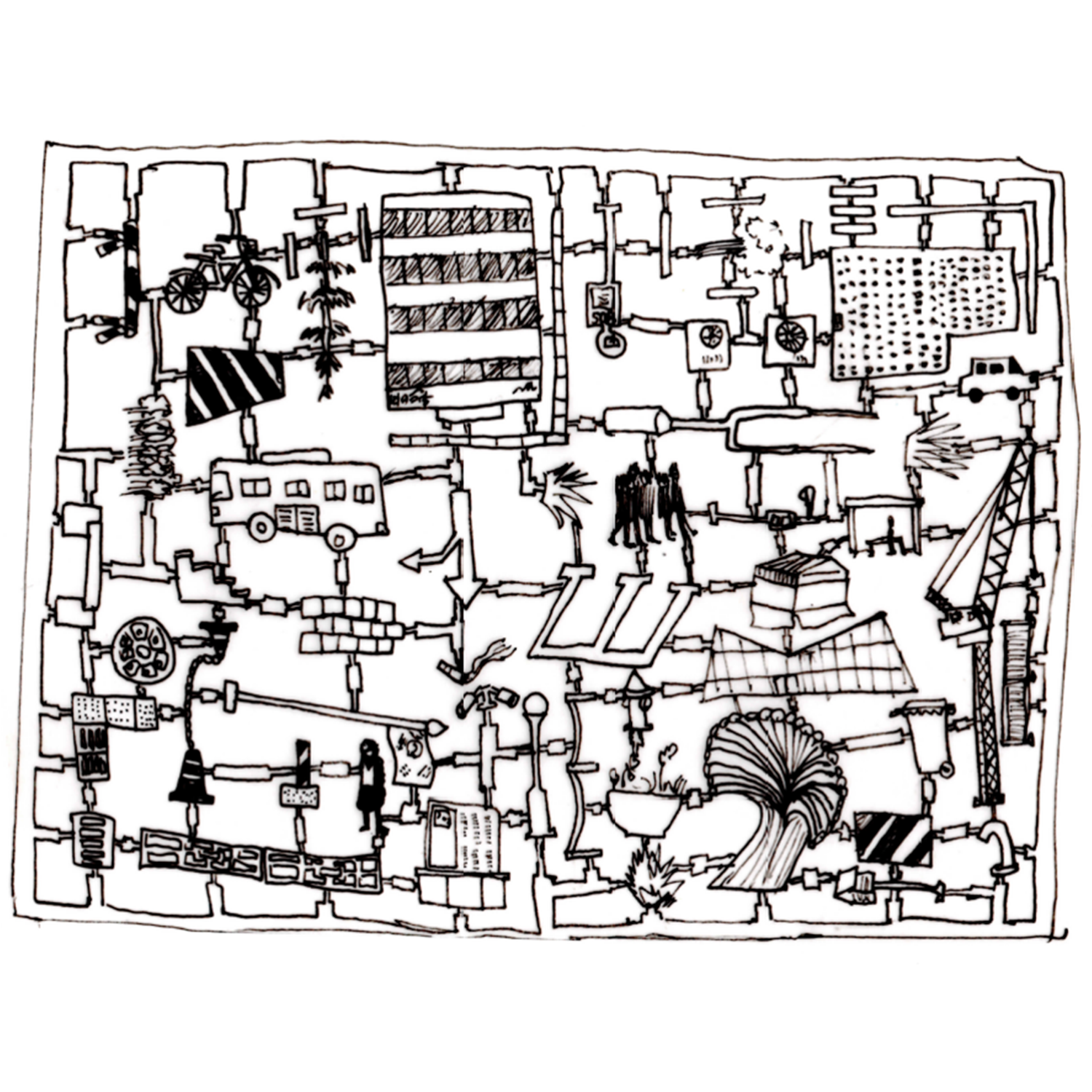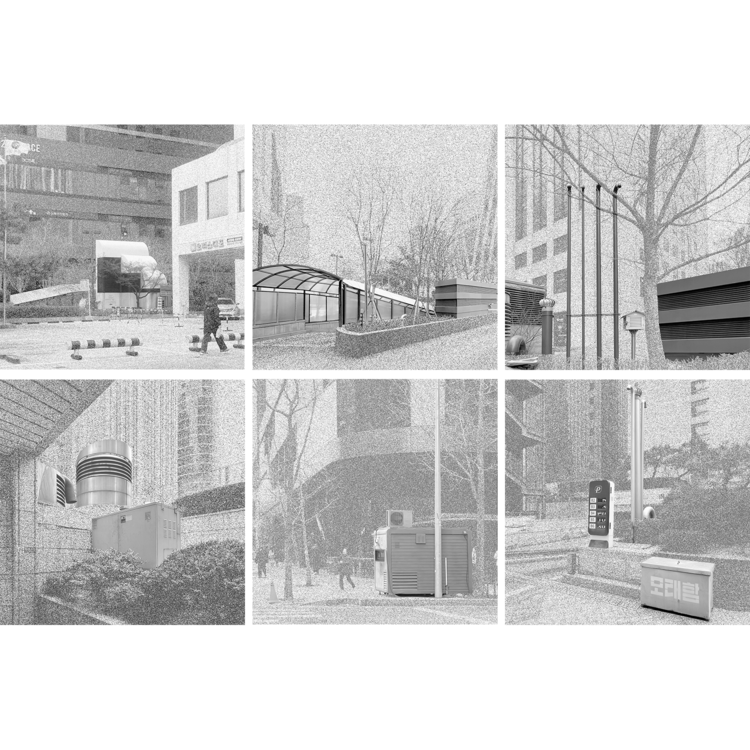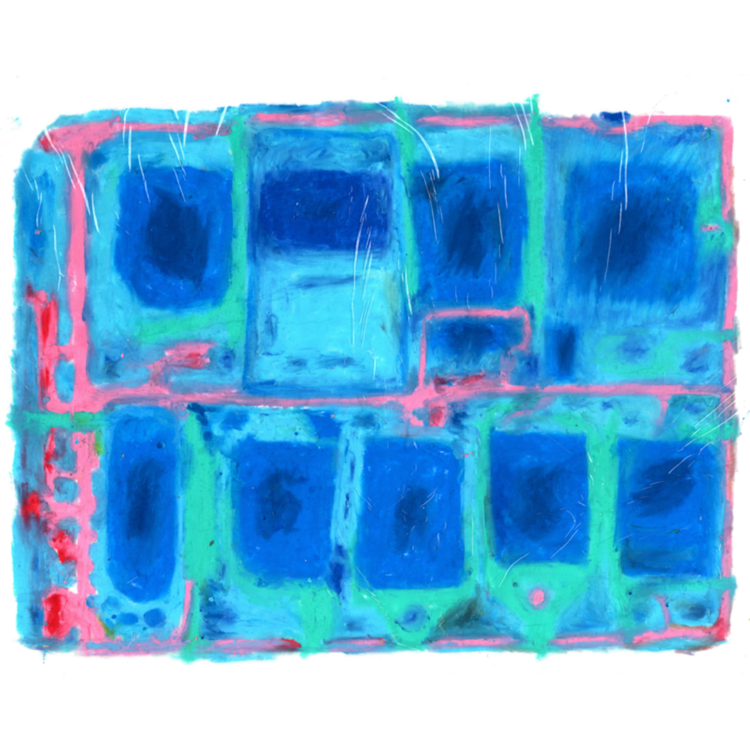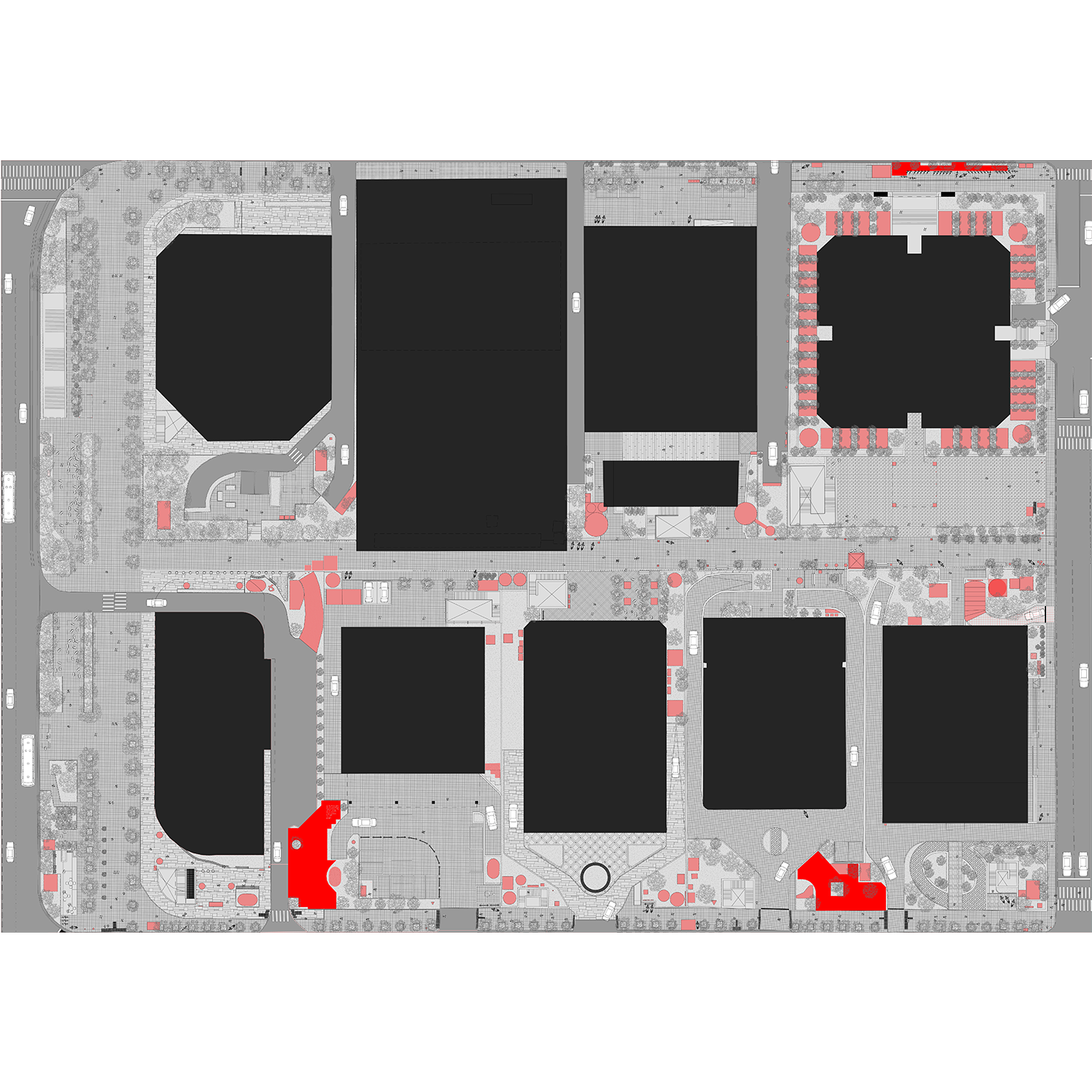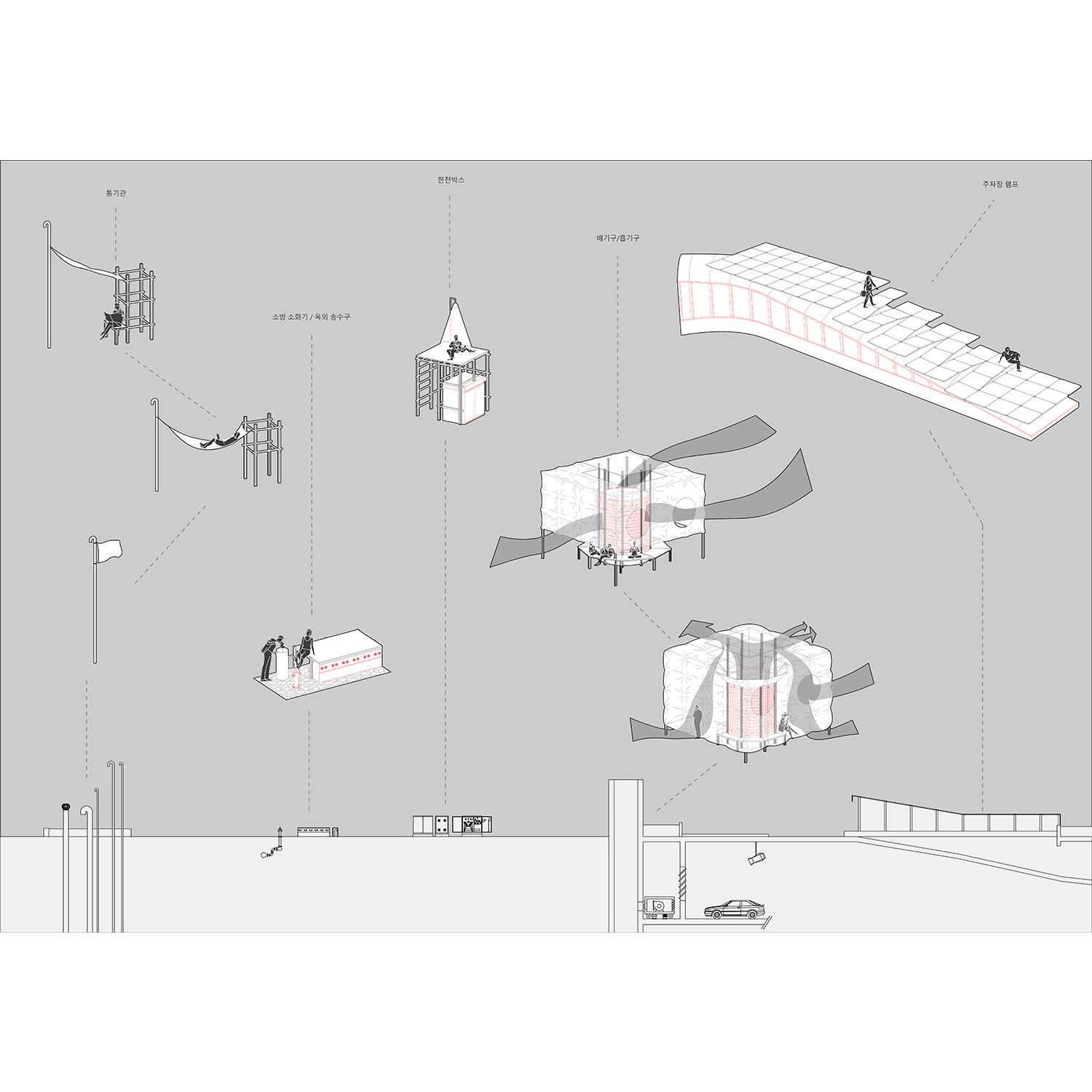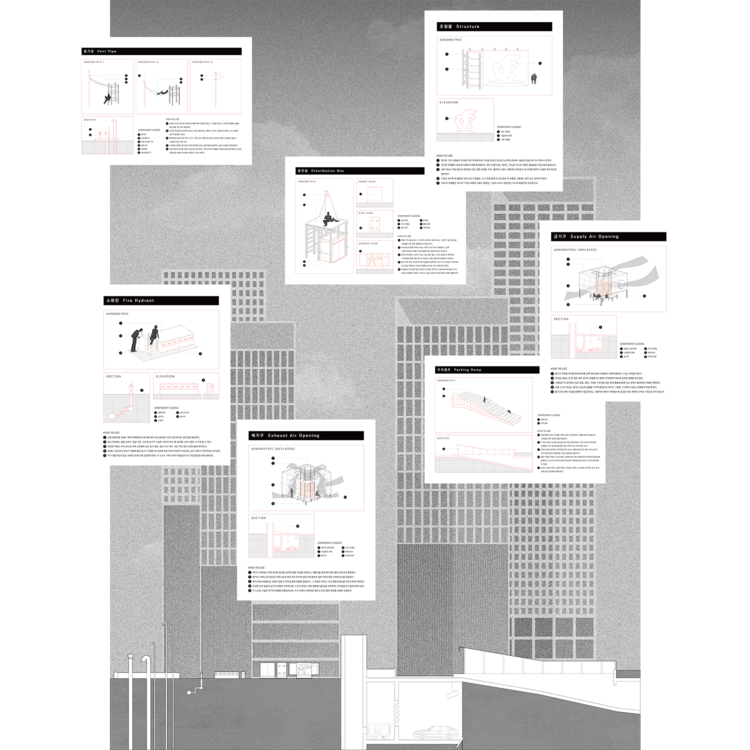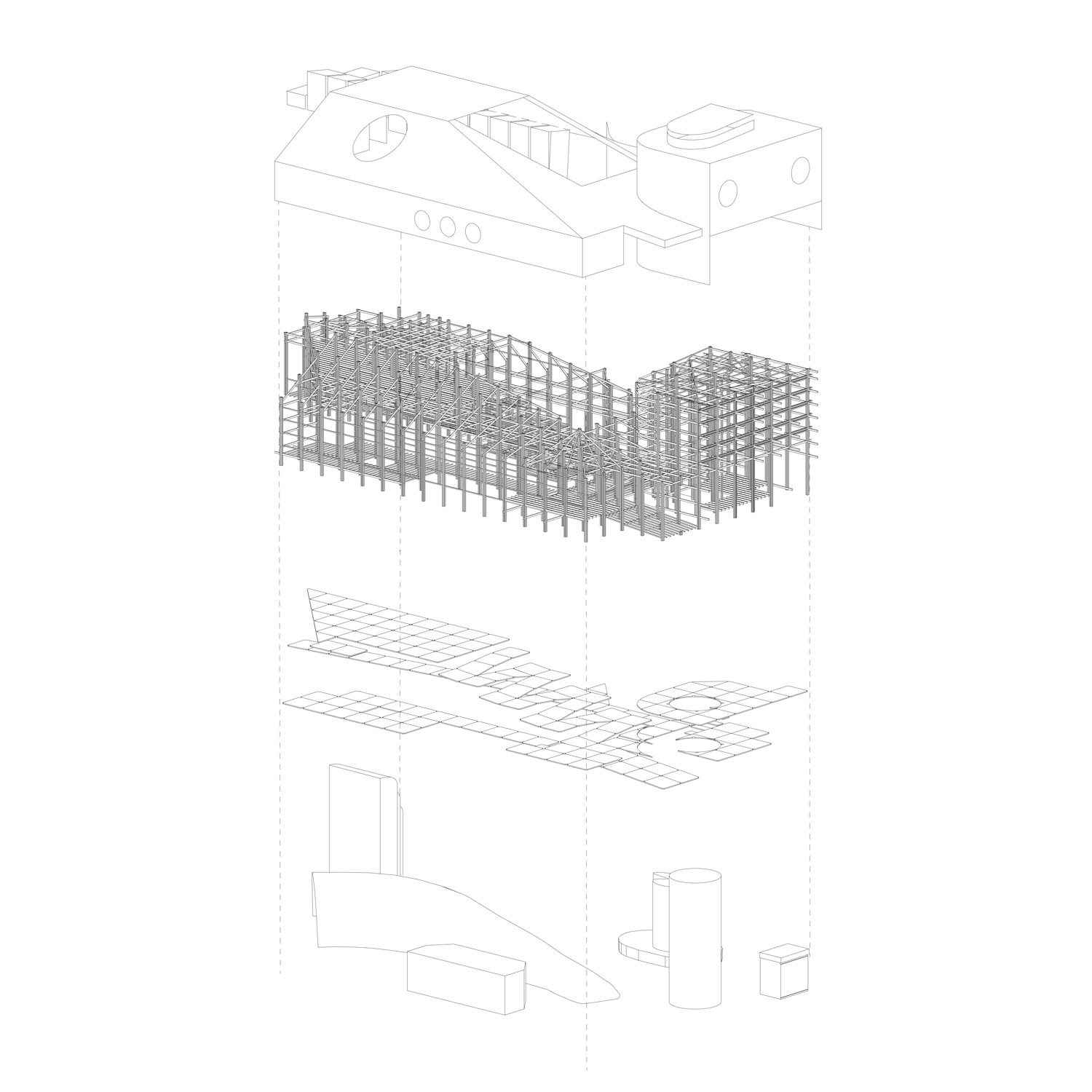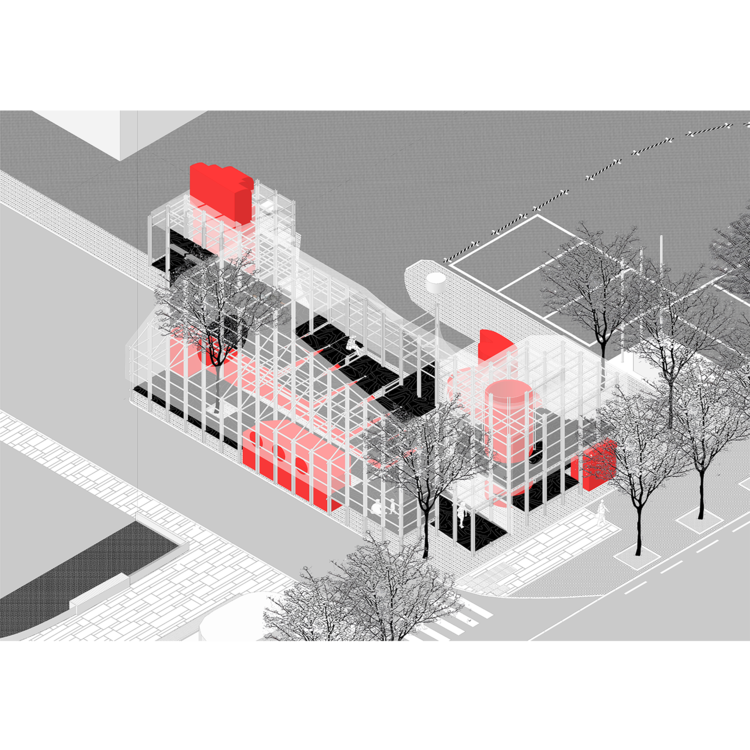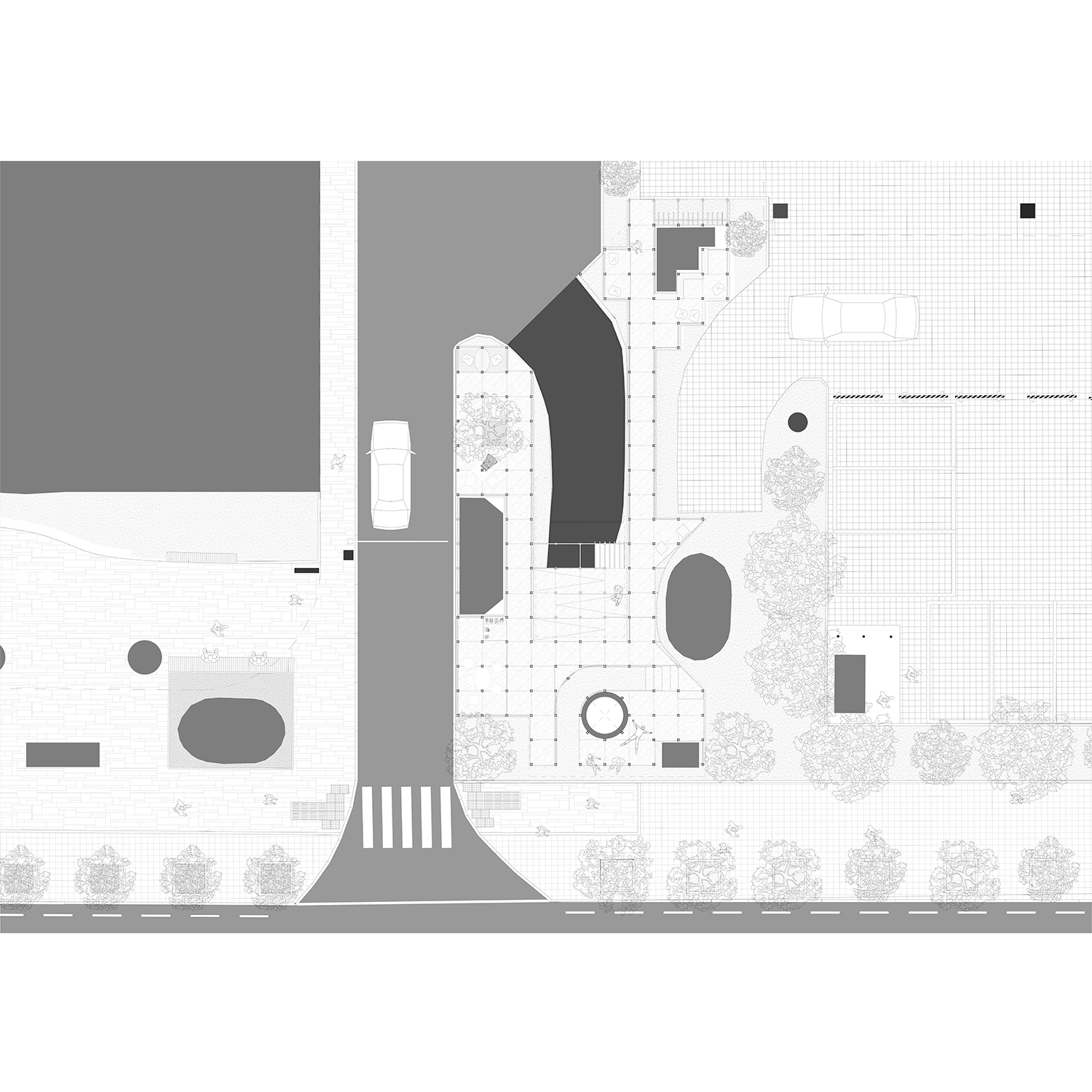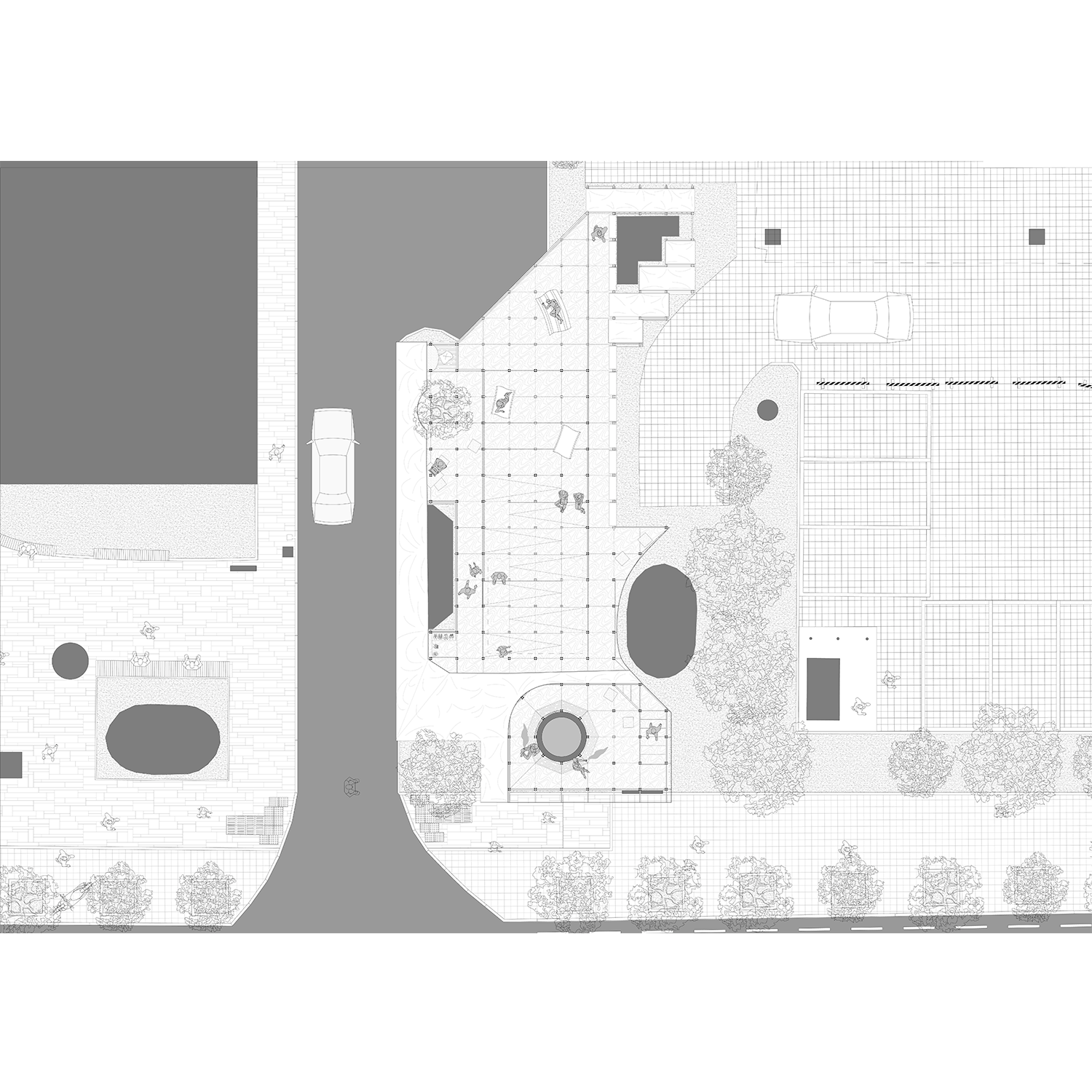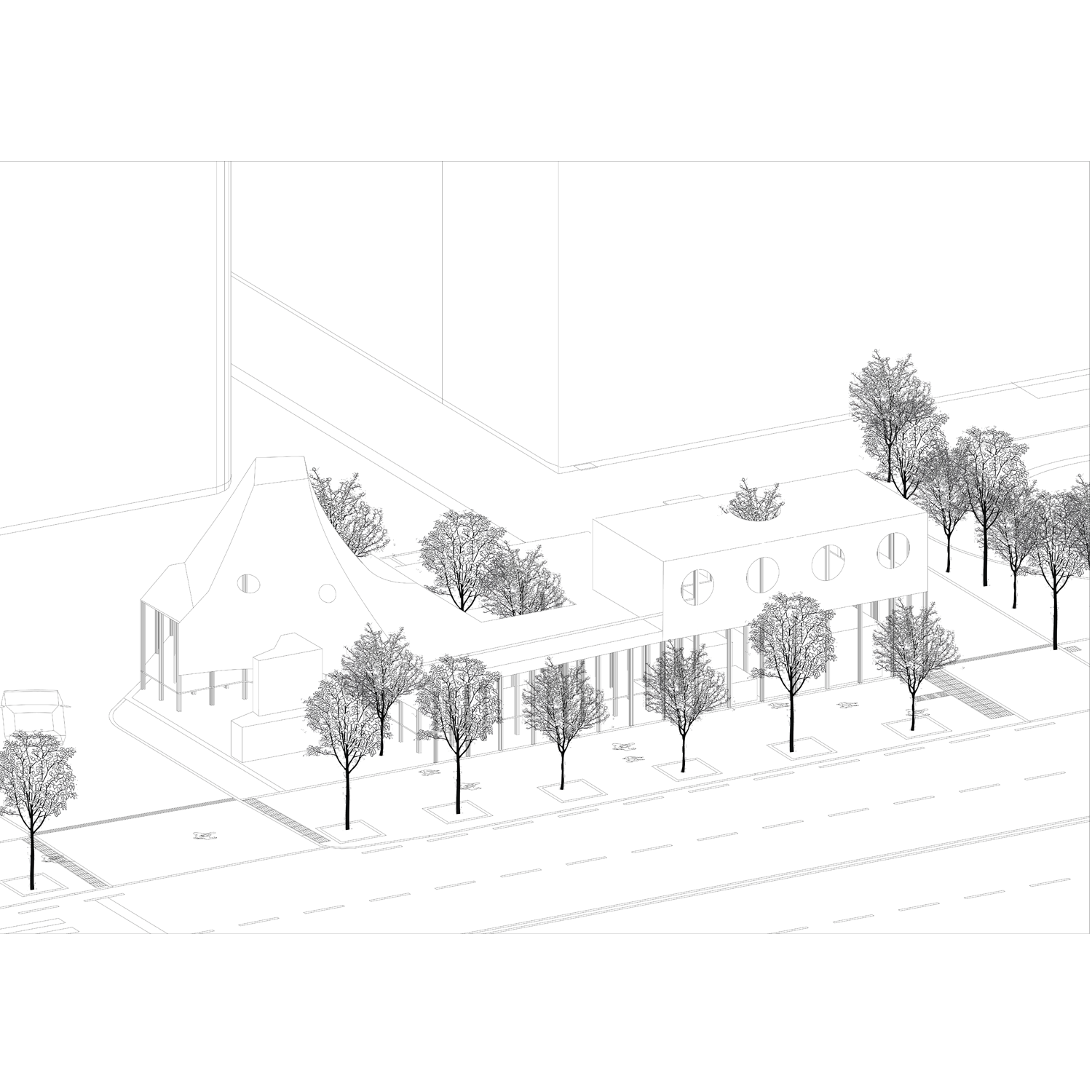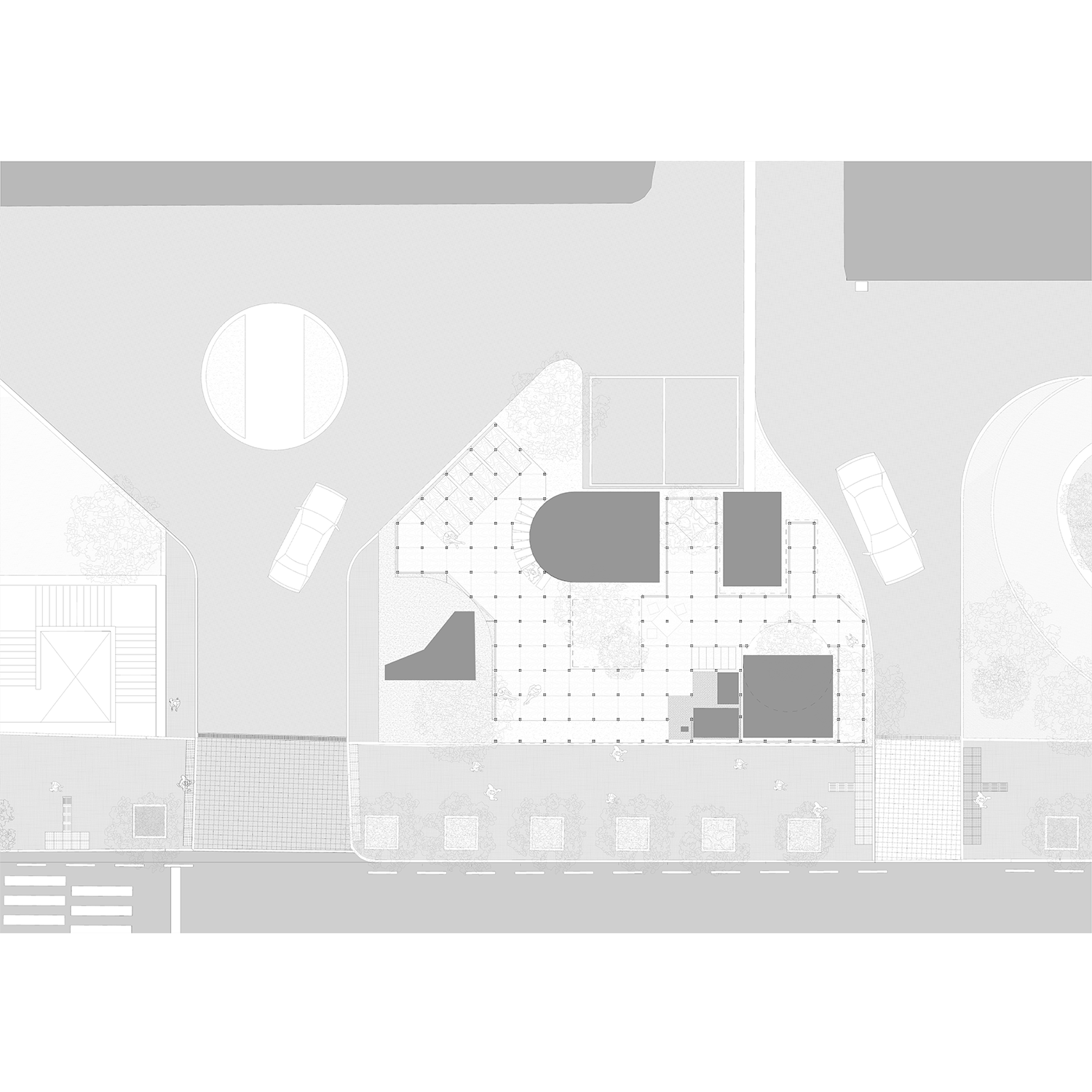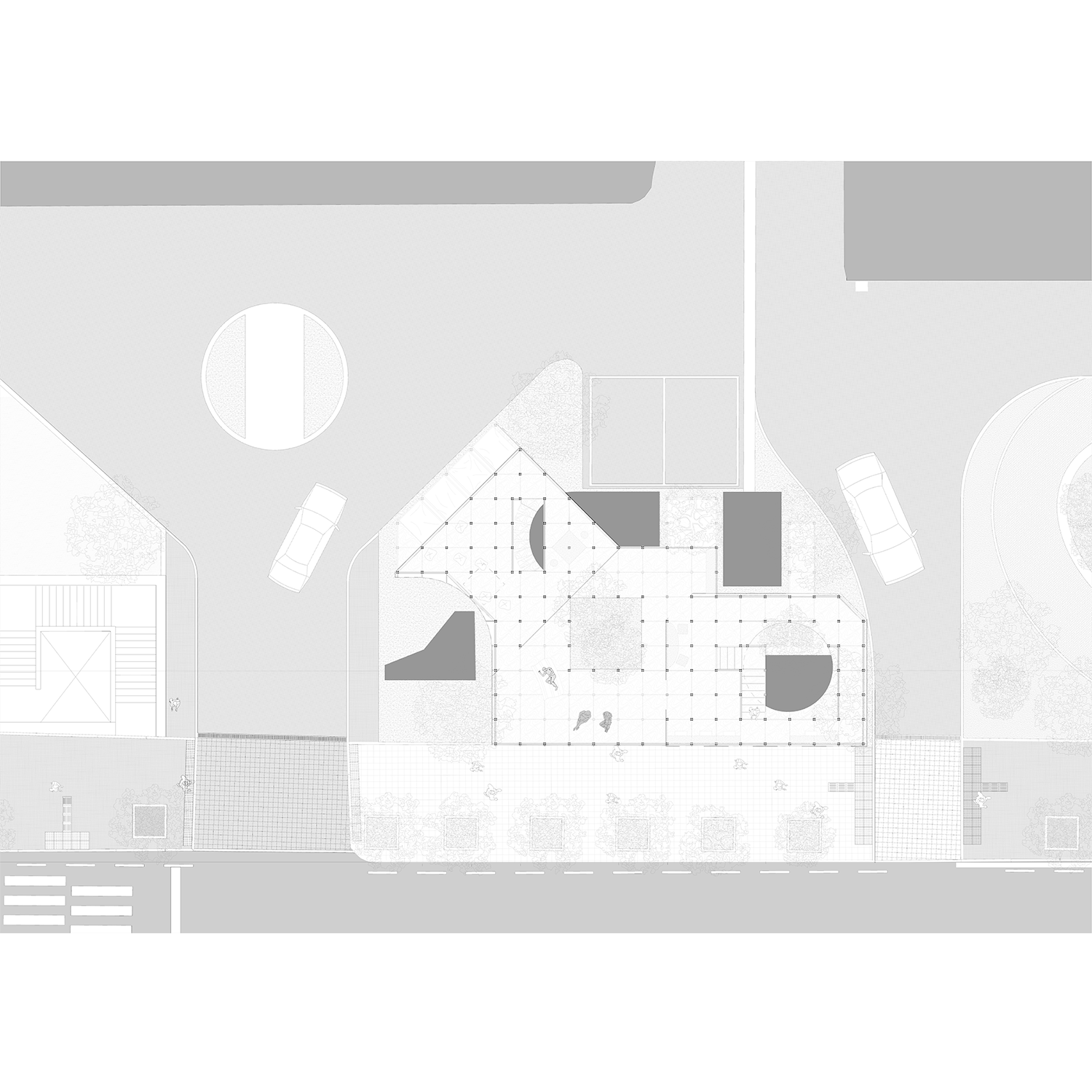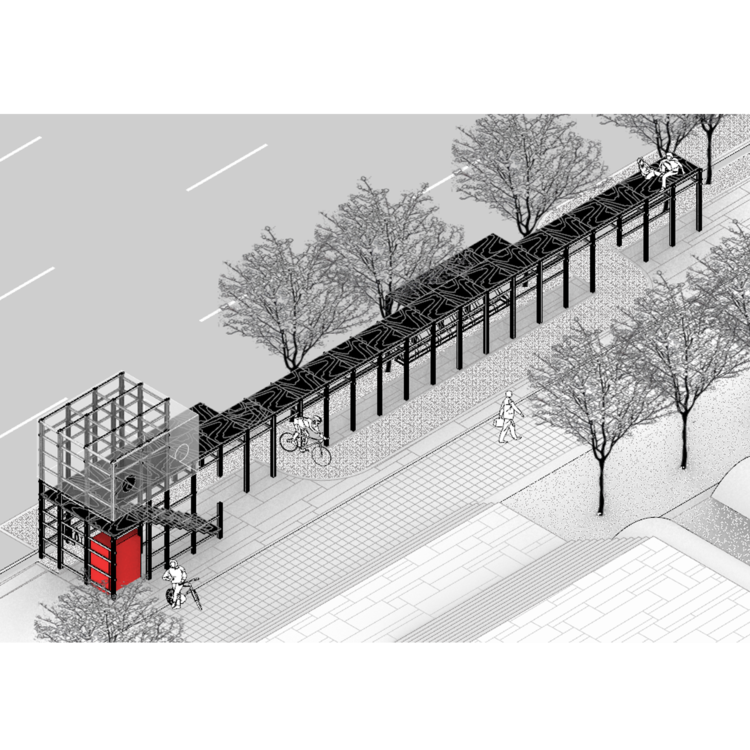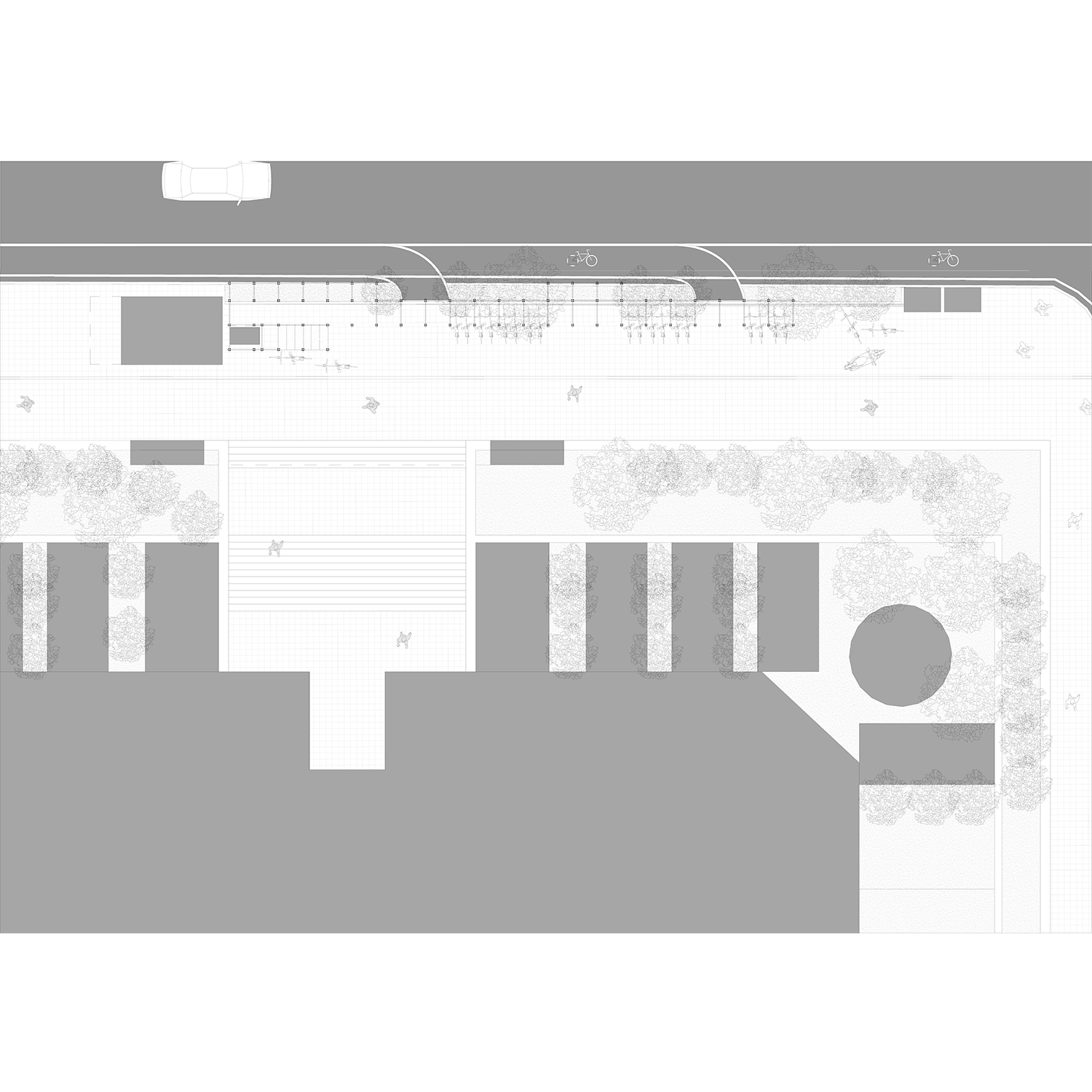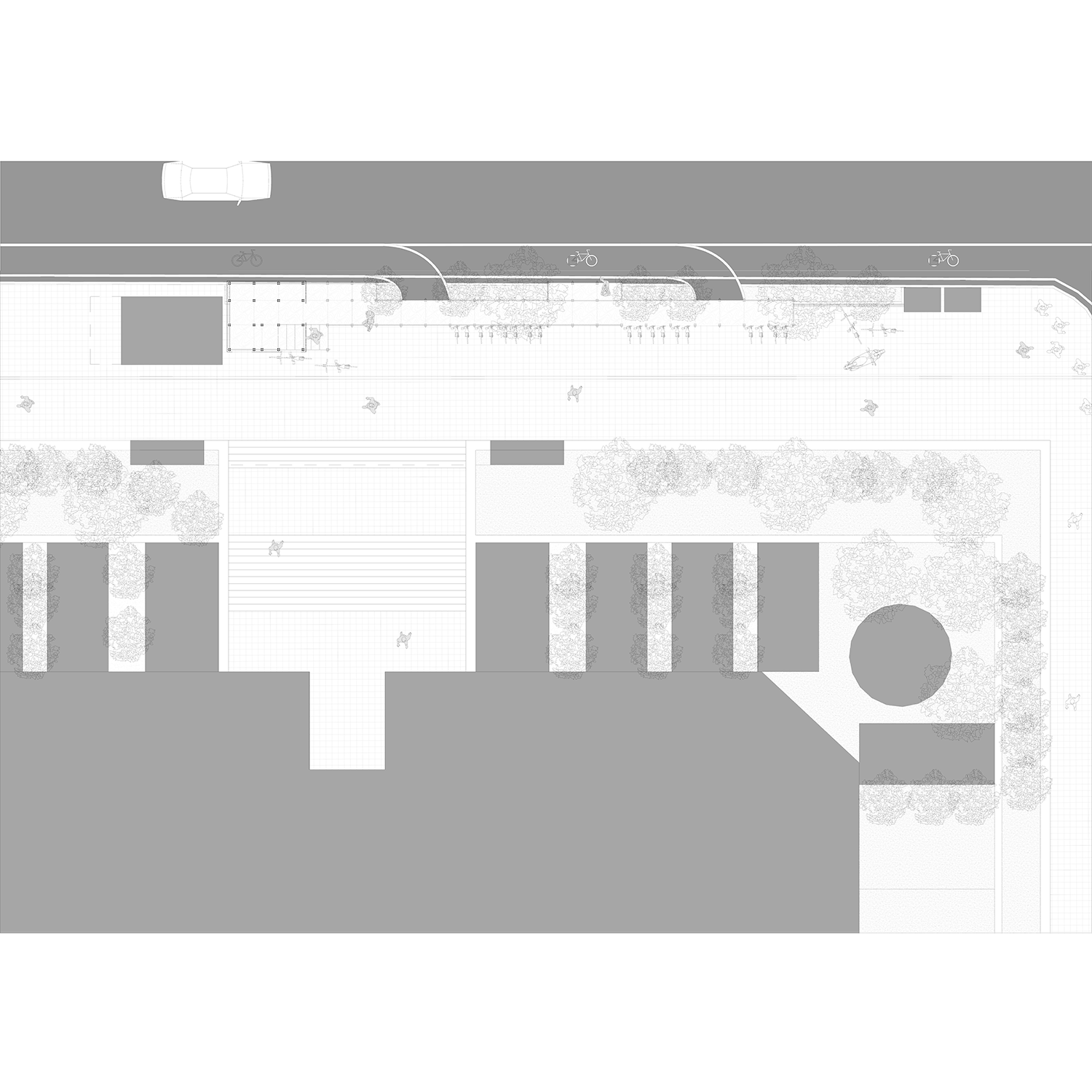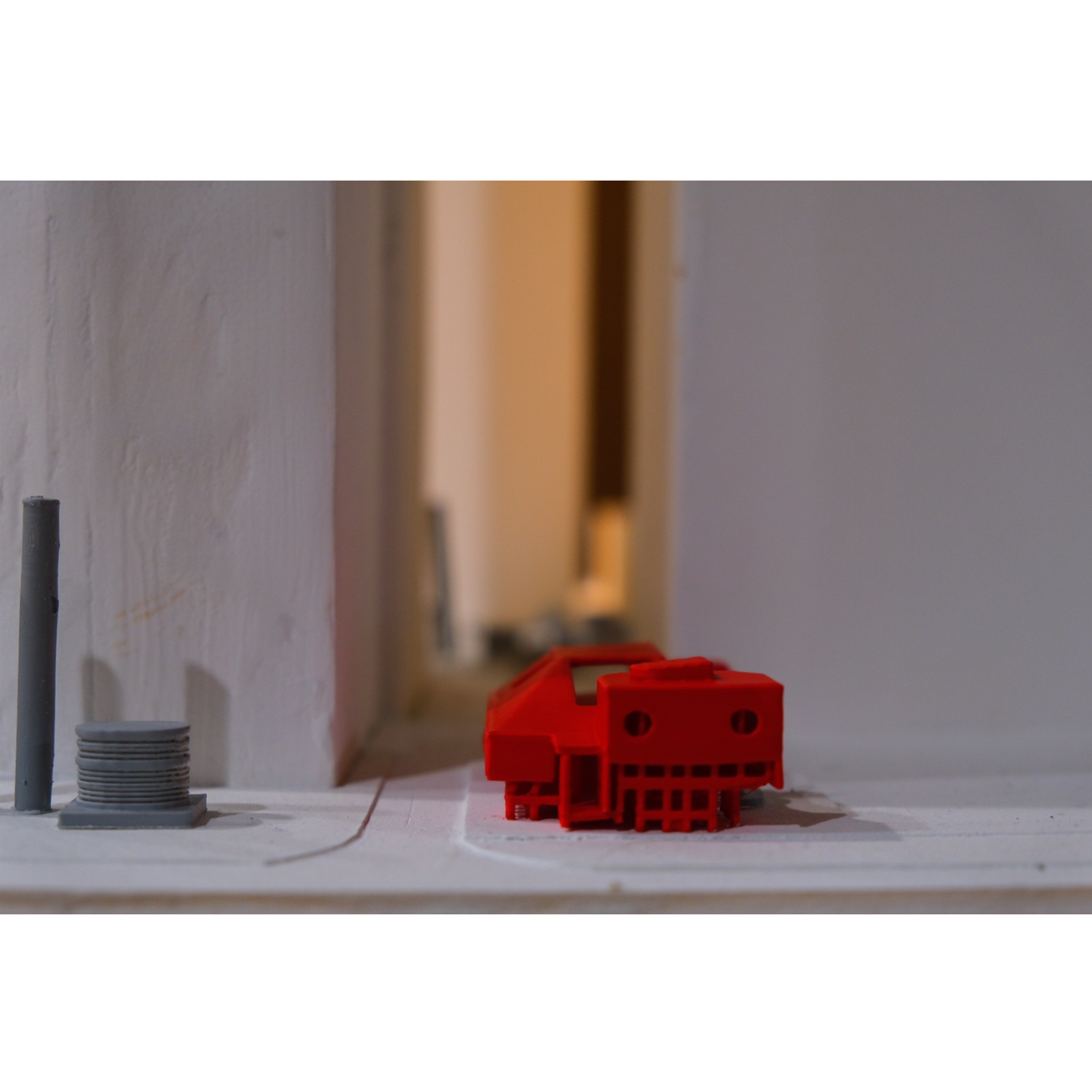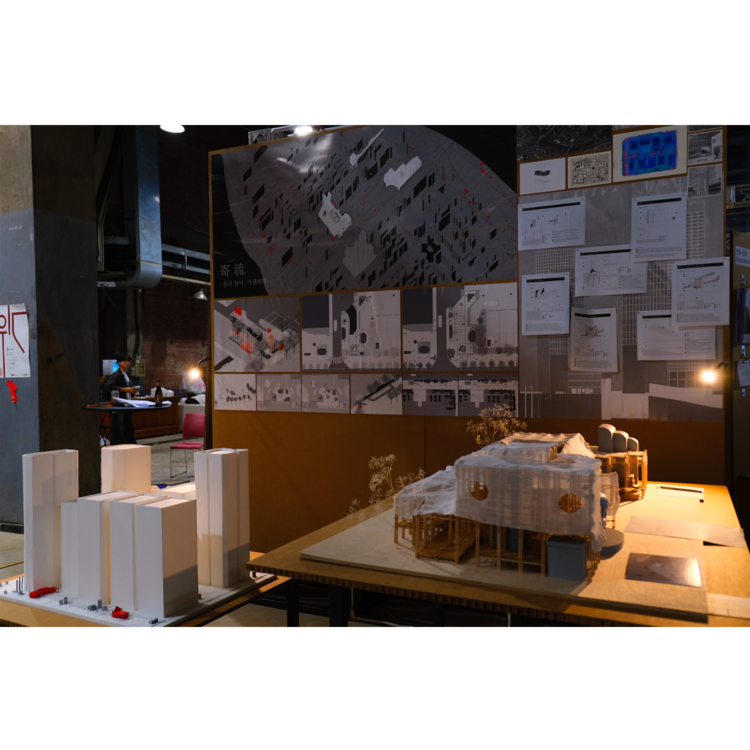김연선 _ 寄流: 흘러들어, 기생하다.
그동안 우리 도시는 효율성에 기대어 빠르게 성장해 왔다. 효율 중심의 산업화와 기술 발전을 통해 도시는 정교하게 계획되고 조직됐으며, 마치 기계 부품처럼 조립된 ‘키트’ 형태로 변모했다. 하지만 극단적 효율 추구는 도시를 딱딱하고 재미없는 ‘지나가는 공간’으로 만들었고, 그 과정에서 우리는 감각과 경험, 우연과 여유를 잃어가고 있다. 삶은 비효율적인 순간이 모여 완성된다는 사실을 잊은 채, 우리는 도시를 더 이상 숨 쉴 틈 없이 꽉 짜인 구조로 만들어버렸다.
이 프로젝트는 그런 극한의 효율 속에서 인간적 여백과 느슨한 경험을 회복하려는 시도다. 서울 여의도 금융권 빌딩 사이, 지하 주차장 진입로와 환기구, 변압기 등 다양한 기능 설비가 모여있는 자투리 틈에 주목했다. 이 공간은 건물을 유지하고 돕는 기능을 수행하지만, 동시에 보행과 머무름을 방해하는 무의미한 곳으로 여겨진다. 이번 설계는 이를 사람이 머무르고 주체적으로 사용할 수 있는 ‘ 기생적 공간’으로 재구성하고자 한다.
설비 기능을 유지하면서 새로운 용도를 덧붙인다. 예를 들어, 급기구 주변에는 신선한 공기를 활용한 명상 공간을, 배기구 주변에는 자연스러운 흡연 공간을 제안한다. 목재와 천으로 만든 가변적 구조물은 사용자의 행동에 따라 형태와 기능이 유연하게 변화하며, 공간을 점차 다채롭게 채운다. 공간은 실질적인 사용이 축적될수록 사용자의 방식에 맞게 스스로 조정되며, 기능 설비의 틈에서 새로운 쓰임새를 담는 유연한 틀로 확장된다.
도시는 이러한 틈을 통해 ‘숨 쉬는 방식’의 공간 실험을 시작한다. 이 작은 공간들은 효율과 인간미라는 상반된 가치가 공존할 수 있음을, 살아 움직이는 도시의 미묘한 틈에서 증명한다. 비효율적이지만 본질적인 인간 경험을 존중하며, 도시는 기계적 키트에서 살아 숨 쉬는 유기체로 거듭난다. ‘기생적 공간’은 도시의 기능을 해치지 않으면서 잃어버린 인간의 자리를 회복할 가능성을 탐구한다.
For decades, our cities have rapidly grown by leaning on efficiency. Industrialization and technological advances have transformed urban spaces into meticulously organized kits—assembled like mechanical parts. But this pursuit of extreme efficiency has rendered our cities rigid and lifeless, reducing them to mere “spaces to pass through.” In the process, we’ve lost our sense of touch, spontaneity, and the luxury of lingering. We've forgotten that life is composed of inefficient moments, and have packed the city so tightly that it no longer has room to breathe.
This project attempts to reclaim human-scale slack and experiential softness within the framework of hyper-efficiency. It focuses on a leftover sliver of space between financial buildings in Yeouido, Seoul—an area cluttered with underground parking ramps, ventilation shafts, and transformers. These installations serve vital functions for buildings, yet the spaces they occupy are often neglected and seen as barriers to movement and presence.
The design reimagines these in-between voids as parasitic spaces—places that subtly inhabit and repurpose the gaps without disrupting the city’s functions. While maintaining the original utilities, new programs are layered on: a meditation zone around fresh air intakes, or a natural smoking area near exhaust vents. Lightweight, fabric-and-wood structures respond flexibly to user behavior, gradually transforming the space into something more layered and personal. Over time, accumulated use reshapes the space, turning it into a soft infrastructure tailored to its users.
Through these small-scale interventions, the city begins to breathe again. These parasitic insertions prove that efficiency and humanity—often seen as opposites—can coexist. They reclaim the forgotten realm of human experience, transforming the mechanical city into a living organism. “Parasitic space” offers a quiet but radical possibility: to coexist with the urban machine while restoring a place for people within it.
